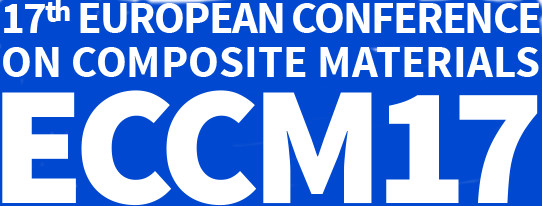

App-Einstellungen:
PLY-BY-PLY DELAMINATION MORPHOLOGY IN COMPOSITE LAMINATES UNDER LOW-VELOCITY IMPACT
Maria Francesca Pernice (University of Bath) Andrew Rhead (University of Bath)
Impact of quasi-isotropic, zero dominated and non-symmetric composite laminates shows delamination shape depends on the fibre orientation in the bounding plies at each interface and always extends in the fibre direction of the lower ply.
INTEGRATED SIMULATION-SUPPORTED COMPOSITE PRODUCT DEVELOPMENT – DREAM OR REALITY?
Thomas Burkart (P+Z Engineering GmbH) Monika Kreutzmann (P+Z Engineering GmbH) Petra Schilling (P+Z Engineering GmbH)
In the paper a simulation-supported composite product development process is described and the advantages and challenges are described.
OPTIMISING THE PLY DROPPING ORDER IN VARIABLE STIFFNESS, VARIABLE THICKNESS LAMINATES USING STACKING SEQUENCE TABLES
Daniël Peeters (Delft University of Technology) François-Xavier Irisarri (ONERA-The French aerospace Lab) Mostafa Abdalla (Delft University of Technology)
The stacking sequence table method, optimising the ply drop order, is combined with a gradient-based optimisation, optimising the fibre angle distribution and ply drop location, to generate optimised variable stiffness, variable thickness laminates.
OPTIMIZATION OF FIBER-STEERED COMPOSITES BY USING THE ISO-CONTOUR METHOD WITH MAXIMUM CURVATURE CONSTRAINT
Anna Arsenyeva (Technical University of Munich) Fabian Duddeck (Technical University of Munich)
The paper presents a novel method for the optimization of fiber-steered composite shell structures, considering manufacturability constraints, expressed in terms of maximum allowed curvature - maximum fiber curvature constraint.
STACKING SEQUENCE OPTIMIZATION OF CURVED UD-CFRP LAMINATES FOR IMPROVING UNFOLDING STRENGTH CONSIDERING THERMAL RESIDUAL STRESSES
Juan Manuel González-Cantero (FIDAMC) Enrique Graciani (Universidad de Sevilla) Federico París (Universidad de Sevilla) Bernardo López (FIDAMC)
The present study shows results of a new analytical model to analyse the effect of residual stresses, due to the cooling after solidification in the manufacturing process, on the unfolding failure. Results are used to optimize the stacking sequence.
STRESS ANALYSIS AND DESIGN SUGGESTIONS FOR MULTI-LOOP CARBON ROVING ROSETTES TO REINFORCE BOLT-LOADED OPEN-HOLE LAMINATES
Luise Kärger (Karlsruhe Institute of Technology) Tim Botzkowski (EDAG Engineering GmbH) Siegfried Galkin (Karlsruhe Institute of Technology) Sebastian Wagner (Natural and Medical Sciences Institute (NMI)) Sebastian Sikora (German Aerospace Center)
An alternative to TFP is presented, where winded carbon rovings are twisted around a bolt. Based on an experimentally validated, mesoscopic FE model generator, various multi-loop configurations are evaluated in terms of stresses and damage behavior.
THE INFLUENCE OF FIBRE ANGLE AND RESIN PROPERTIES ON UNCURED INTERPLY SHEAR
Samuel Erland (University of Bath) Timothy Dodwell (University of Exeter) Richard Butler (University of Bath)
Interply shear is investigated for angled ply interfaces using a previously established methodology. Results are discussed with the aid of surface topology data, with a view towards validating findings on a laminate scale demonstrator.
ULTRA-LIGHTWEIGHT CFRP CORES MADE BY INTERLOCKING METHOD: FABRICATION AND EVALUATION
Juan Pablo Vitale (Universidad Nacional de Mar del Plata) Gaston Francucci (National University of Mar del Plata ) Helmut Rapp (Universität der Bundeswehr München) Ariel Stocchi (National University of Mar del Plata )
In this paper, carbon fiber square-honeycomb are obtained by an interlocking method. Three different geometrical patterns are studied. Compressive and shear strength are evaluated. Results are compare to analytical and numerical models.
VARIABLE STIFFNESS COMPOSITES FOR ROTATING PRE-TWISTED PLATES
Matthew Thomas (Bristol University) Paul Weaver (University of Bristol) Stephen Hallett (University of Bristol)
A methodology for the design and optimisation of non-symmetric variable angle tow (VAT) laminates, with the aim of increasing the untwist of a rotating pre-twisted plate subjected to centrifugal force is discussed and the results shown.
OPTIBLESS - AN OPEN-SOURCE TOOLBOX FOR THE OPTIMISATION OF BLENDED STACKING SEQUENCES
Terence Macquart (Bristol University)
A free open-source toolbox for the optimisation of blended stacking sequences is presented (https://github.com/TMacquart/OptiBLESS). The toolbox capabilities and methodology are detailed and successfully applied to an optimisation problem.
